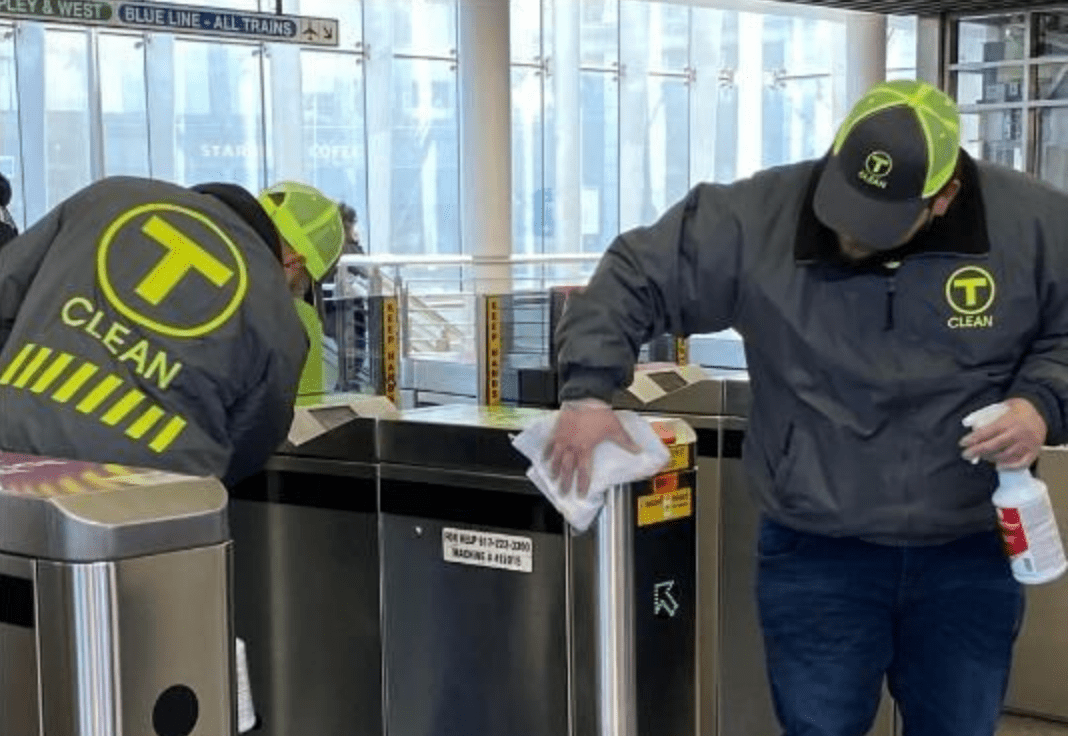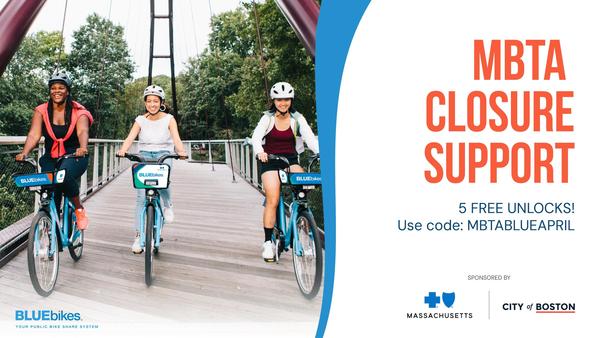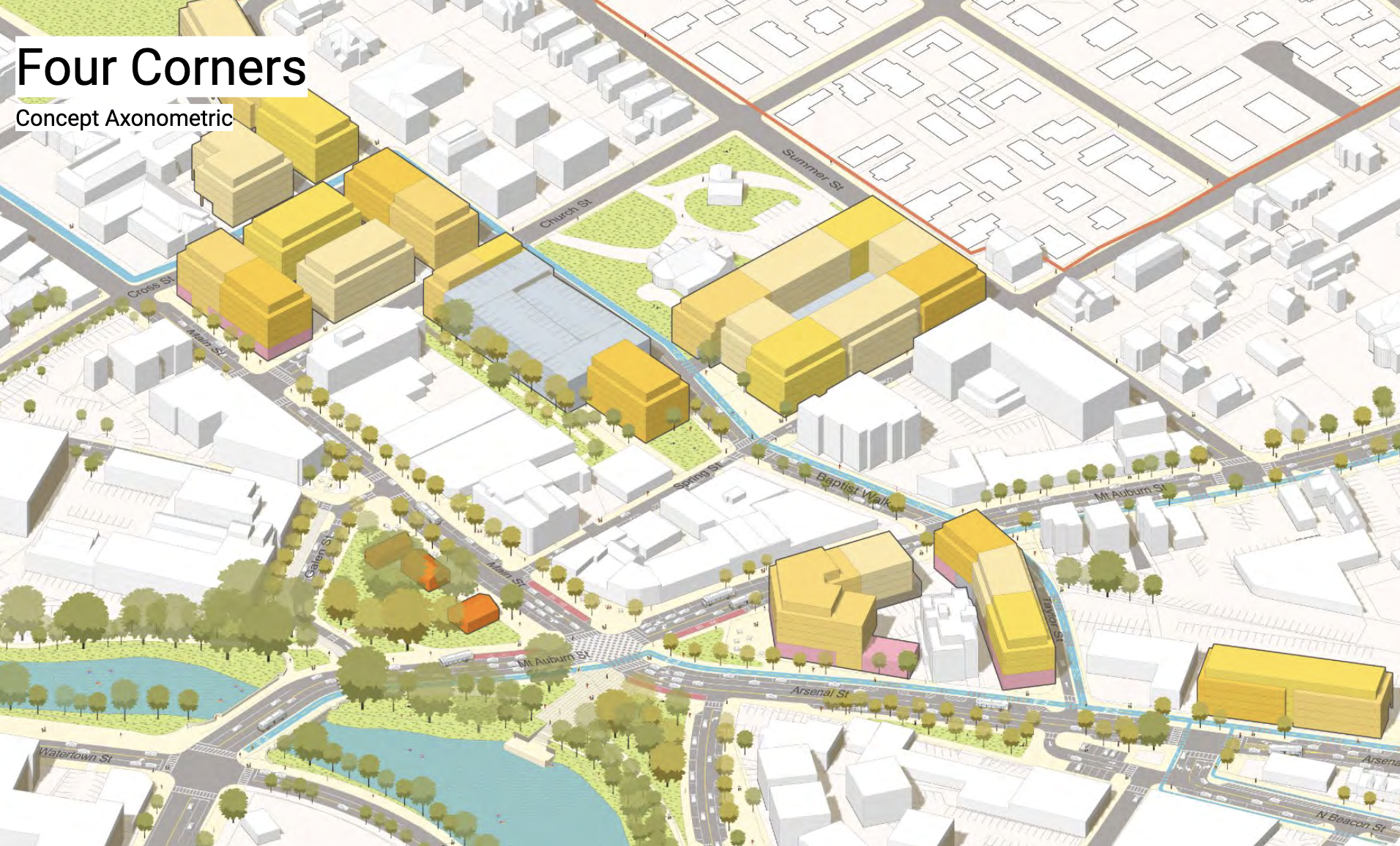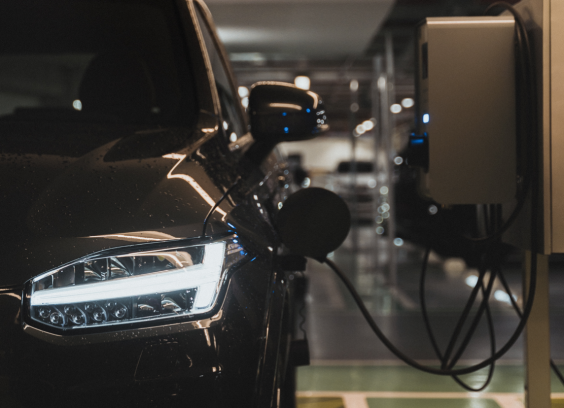Guest Column: T Shows Strong Leadership In COVID-19 Responses
1:33 PM EDT on May 14, 2020

MBTA staff disinfect fare gates in an effort to slow the spread of COVID-19 and other viruses in early March 2020. Courtesy of the MBTA.
In the United States, 2.8 million transit riders – one-third of transit commuters – are considered “essential workers” during the COVID-19 pandemic.
While the situation continues to evolve daily, a comparison of multiple transit agencies suggests that the MBTA, which just last December was the subject of a serious safety report, has become a national leader in providing safe, flexible service in the lead-up to the surge of the pandemic.
Almost overnight, public transit systems across the United States and the globe were faced with the threat of COVID-19 and the implications of the virus for their workforce and riders. While some public transit operators had longstanding contagious and virus response plans in place, no formal guidance from the White House on COVID-19 was issued to transit agencies to help them devise and implement a response roadmap, and the Centers for Disease Control and Prevention (CDC) didn't put out guidelines until mid-April. This left many public transit agencies, including the MBTA, to rely on state and local directives, which were responding to the evolving situation on the ground, to guide their response timeframes.
In a recent report, COVID-19 & Public Transit, A Better City compared when and how public transit agencies responded to the pandemic, and how the MBTA has measured up to relative to other transit systems.
The analysis shows that the MBTA’s response has been above the norm, largely due to the agency’s flexibility in continuously making improvements to its actions as the crisis unfolded.
The report also considered the near- and long-term concerns agencies may face when the economy reopens and looks at potential actions to help keep the workforce and riders safe. Initial research suggests the MBTA has the potential to take a leadership role on this front as well.
The MBTA, like many of its peer agencies (New York MTA, LA Metro, Chicago CTA, and Washington DC WMATA), focused its early response measures on preventing the spread of disease through environmental hygiene, e.g. vehicle and station cleaning practices, and administrative controls, e.g. best hygiene practices for passengers. As the threat of the outbreak increased, agencies broadened their responses measures to expand actions to prevent the spread of disease as well as focus on measures to provide service during the pandemic, manage workforce impacts, and communication. These are protocols outlined in the American Public Transportation Association’s (APTA) pandemic preparedness and response guidelines, which were re-issued in March to support transit operators.
The MBTA took early action and made steadfast adjustments along the way to respond to the evolving COVID-19 threat. In early March, when there were signs of spread in other parts of the country like Los Angeles, New York, and Chicago, but no confirmed cases yet in Massachusetts, the MBTA took precautionary measures to encourage riders to take off-peak trains and promote best hygiene practices for riders.
As the threat of the virus mounted, and no concrete actions were in place to lockdown the economy, the MBTA once again took preemptive measures to protect its workforce and riders by instituting vehicle and station disinfection practices. The MBTA continued to adapt when called upon to put in place a second wave of response measures to reduce service across the system to protect workers and passengers in response to Governor Baker’s State of Emergency on March 10th.
The MBTA continues to implement measures to prevent the spread of disease to protect its workforce and riders, e.g. adding physical barriers and social distancing stickers to separate drivers from riders, and adjusting service to provide the service essential workers, such as hospital staff and emergency responders, who are crucial in helping to slow the spread of COVID-19, need, e.g. earlier peak service times.
However, the fight is far from over. While the MBTA has performed well thus far, it can do more today to promote social distancing by considering running regular service and limiting the number of riders on buses and trains. These actions are being taken by other agencies in the United States.
The agency can also start to focus some of its attention on what additional measures will be required to ensure the safety of workers and riders when the economy reopens. White House guidelines and recommendations from other countries do not yet address public transit in a granular way, but it is clear that public transit agencies will not go back to operating business-as-usual.
Continued, aggressive protocols will be needed to prevent reinfection and to keep riders safe, in particular measures to prevent spread, including enforced social distancing, hygiene stations, masks, increased service, etc. The MBTA needs to stay ahead of curve on this front and take a leadership role in developing best practices to provide safe service over the months to come to prepare for a new economic, social, personal safety environment and standards that are financially sound and promote the public transit industry’s essential role.
Pre-COVID-19, 500,000 residents in Massachusetts relied on the MBTA to get to work every day. The answers to these many outstanding questions will help the Commonwealth secure a viable public transit system fit for the post-COVID-19 world and bring riders back to the T.
Caitlin Allen-Connelly is Project Director at A Better City. Follow her on Twitter: @CaitlineAllen
Stay in touch
Sign up for our free newsletter




